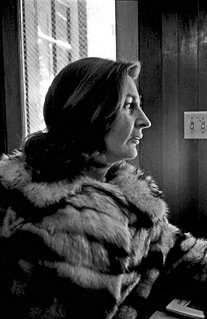Cade OilThis dark oil has an intense smoky odour of forest fires. This is the destructive distillation of a species of juniper (the plant material is actually burnt during the distillation and therefore the intense smoky aroma). Also used in Russian leather, and provides durability for leather. Books bound with Russian leather will not get mouldy, according to
this site.
MyrtleThe oil of myrtle is used mosly in Turkish leather tanning. This is not used in lperfumery very often for creating leather accords, as this is a very green, clean, fresh, camphor-like scent and it’s not associated with leather as much as the other notes.
To read more about plants used for tanning Visit this website .We are now going to move to the mundane and familiar odour of feces, especially those which filled the metropolis of ancient times, before the sophisticated sanitary systems that we enjoy today in our air-polluted cities. The open sewers were an inevitable part of the daily lives of all the people who lived in the cities, rich or poor. But the rich and the noble ones could afford to suffer just a bit less of it, as they were able to afford coaches and horses which provided some distance from the stench; and also the nobelty had certain privileges such as walking in the middle of the street and away from the sides where potties could be emptied on their heads…The stench of the streets lead to the creative collaboration between glove makers and perfumers:
The first thing that one wants to do is to cover their noses from the stench… And the hand was usually covered with a glove… Which was, indeed, covered with scent strong enough to mask the terrible odour of the old urban jungles.
With the improvement of the sanitary systems in the cities the gloves fashion gradually faded out. But it left behind it an elaborate legacy of European perfumery. Later on, the leather as a scent made a come back with Chanel’s Cuir de Russie – this time romanticizing the exoticism of furs of wild animals caught in the woods of cold, far away Russia (or, perhaps, Canada). It employed an impressive amount of castoreum, a by-product of the fur industry. Castoreum is a secretion from a gland of both the male and the female beavers that live in Russia and Canada. It can only be found after killing the animal, thus making capturing beavers a double-shot of wealth for the hunter. On its own, castoreum smells like death. It really does. As repulsive as death could possibly be, combined with the guilt of smelling the remains a wild animal hunted for its fur and sexual smell. When highly diluted, castoreum smells just like leather. Like old leather bound books. Dry, leathery, exquisite.
So now that we have pretty much exhausted the topics of dead animals and poop, perhaps we can move on to the two main questions that you have in mind are (in hopes that your appetite for that fragrance family isn’t ruined yet):
WHAT DO LEATHER PERFUMES SMELL LIKE?The answer is simple: they smell like leather!
Step in to the nearest shoe store, and get your nose close to a pair of leather boots.
Go to your nearest horse-barn and get acquainted with the saddles and tacks.
Bury your nose in an old leather book…
That’s what leather perfumes smell like, at least in part.
To this may be added spices, resins and balsams for sweetness and warmth; flowers for a sophisticated perfume-y impression; Tobacco that accentuates the tannin scent of cured leather; aldehydes for softness and warm roundness or an oily skin like residue; citrus for clean freshness and to add balance to the heaviness and darkness of leather; and more often than ever – there will be smoky notes.
HOW ARE LEATHER SCENTS BEING MADE?By now you probably guessed that there is no leather essential oil, and perfumers don't soak and tincture leather to make leather perfumes... The only animal material that has any importance in leather perfumes is castoreum.
Although castoerum is a key ingredient in many leather perfumes, it is not essential to kill animals to enjoy a leather aroma. When well crafted, other “vegan” notes, such as tobacco, black tea, labdanum, cade, patchouli and birch tar can create the impression of leather without drawing as much as a drop of blood from an innocent animal. I am proud to say that such an example lies in my line in the form of
Espionage – the formidable leathery concoction that dries down into a musky-vanilla skin scent.

Leathery perfumes can be taken to all kinds of directions – aromatic, woody, floral, even gourmand (if, like Charlie Chaplin, you find leather appetizing). Technically, leather is considered a member of the Chypre family, which is where it originally branched out from. Many leathery perfumes have oakmoss in at least minute quantities, and are considered a sub-category of the chypre family. However, there are some leathers that have very little in common with Chypre, and are more of an oriental. I personally think that even though it may be convenient to add more and more sub-categories to the Chypre family, that perhaps the Leathery scents truly deserve a category of their own. Scents such as Tabac Blond, Cuir de Russie, Bandit, Feuilles de Tabac, truly deserve their own family.







